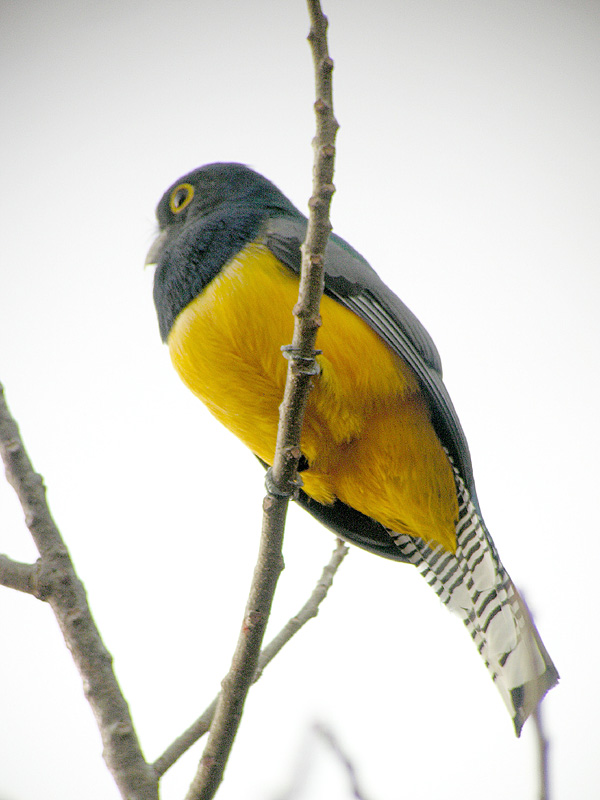|
| Query: black perch | Result: 98th of 200 | |
Violaceous Trogon (Trogon violaceus) - Wiki
| Subject: | Violaceous Trogon (Trogon violaceus) - Wiki
| |

| Resolution: 600x800
File Size: 143885 Bytes
Date: 2007:01:11 04:08:20
Camera: E8400 (NIKON)
F number: f/2.6
Exposure: 10/90 sec
Focal Length: 123/10
Upload Date: 2008:01:11 15:27:54
|
Violaceous Trogon
From Wikipedia, the free encyclopedia
Order: Trogoniformes
Family: Trogonidae
[Photo] Violaceous Trogon (Trogon violaceus) male at Costa Rica. Source: Flickr (www.flickr.com/photos/lenblumin/2153558408/). Date: Taken on January 11, 2007. Author: Len Blumin (www.flickr.com/photos/lenblumin/).
The Violaceous Trogon, Trogon violaceus, is a near passerine bird in the trogon family, Trogonidae. The nominate race occurs in southeastern Colombia, Bolivia, Venezuela, the Amazon basin, the Guianas and Trinidad. The form T. v. caligatus breeds in Mexico, Central America and south to Peru. The latter form is often split as a separate species, the Northern Violaceous Trogon, Trogon caligatus (Ridgway, 1911), leaving the nominate form as the Amazonian Violaceous Trogon.
It is a resident of moist tropical forests, where it nests in a wasp, ant or termite nest or a hole in a rotten tree, with a typical clutch of two or three white eggs.
Violaceous Trogons feed on insects and small fruit, and their broad bills and weak legs reflect their diet and arboreal habits. Although their flight is fast, they are reluctant to fly any distance. They typically perch upright and motionless.
Trogons have distinctive male and female plumages, with soft, often colourful, feathers. This relatively small species is about 23cm long and weighs 56 g. The head and upper breast of the male are blue and the back is green, becoming bluer on the rump. A white line separates the breast from the golden yellow underparts. The undertail is white with black barring, and the wings are black, vermiculated with white. The female Violaceous Trogon has a dark grey back, head and breast.
This species superficially resembles the White-tailed Trogon, but the latter is larger and has a whiter tail.
The shade of the blue of the head differs between the two forms, but the call is the main distinction between the Northern and Amazonian Violaceous Trogons. The former has a slurred whistled cuh-cuh-cuh, and Amazonian has a soft cow cow, cow.
http://en.wikipedia.org/wiki/Violaceous_Trogon
| The text in this page is based on the copyrighted Wikipedia article shown in above URL. It is used under the GNU Free Documentation License. You may redistribute it, verbatim or modified, providing that you comply with the terms of the GFDL. |
|
^o^
Animal Pictures Archive for smart phones
^o^
|
|

